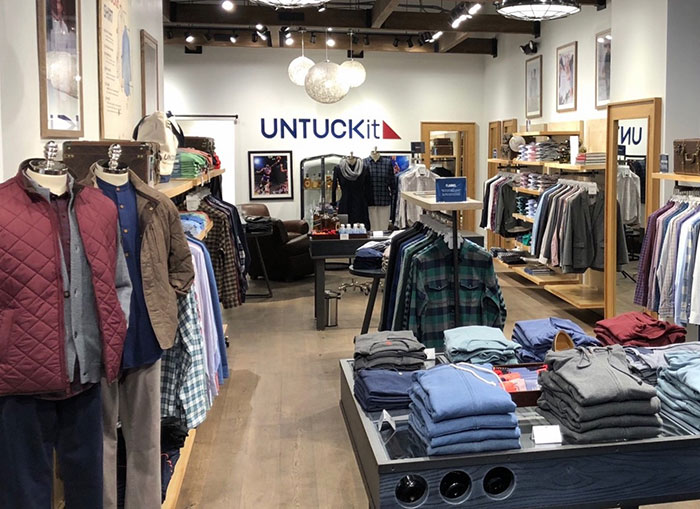
Untuckit, the fast-growing brand whose signature shirts are made to be worn untucked, has made the leap to bricks-and-mortar with ease. Founded online in 2011, the start-up has grown from five stores at the end of 2016 כדי 25 locations at the beginning of 2018 — a number it hopes to double by year-end. According to reports, Untuckit has been profitable since its second year of business.
Mirroring its strategy online, the brand’s growth and success in physical retail has benefitted from high-touch customer service, with expert associates who go out of their way to assist customers. Associates help customers choose from the selection of “try-on” sample shirts on display. When the customer has decided on the style, גודל ומתאים, the associate retrieves the fresh item for purchase.
A strong tech foundation (using the RetailNext platform) that brings e-commerce style shopper analytics to its brick-and-mortar stores is also critical to Untuckit’s success. Now the brand is taking the next step, and has entered into a pilot at its flagship on Manhattan’s Fifth Avenue with Sato Global Solutions to optimize its store inventory through RFID and inventory visibility. It uses data collected by Sato’s RFID chips on men’s shirts, combined with RetailNext traffic counters and other in-store data points, to track which shirts are tried on, if the sizing fits and purchase information. The data allows Untuckit to identify the optimal merchandising mix based on what people try on versus what they buy.
The solution gives store managers visibility into merchandise movement, allowing them to better determine customer demand. The tiny RFID tags on the “try-on” shirts collect real-time data on merchandise movement from showroom to fitting room (and back).
Using a combination of the chip data, overhead traffic counters from RetailNext and POS data, the managers can identify which shirts (right down to the exact size and style ) are being tried on and purchased, allowing them to optimize inventory levels in real time based on shopper behavior. The information also suggests which sizes or styles can be reduced in volume due to low customer demand, reducing inventory cost and allowing for the retailer to redirect its investments toward more popular SKUs and new offerings.
As part of the pilot, beacon-based traffic counters from RetailNext allow Untuckit to count, observe and measure the traffic paths of shoppers as well as store associates.
“This pilot is a great example of the IoT in retail,” said Keith Sherry, COO of Sato Global Solutions, which did the implementation of the system in the store to connect all the pieces together. “We have the ability to ‘upgrade’ the physical store in a way that captures the same kind of data we get during online interactions.”





